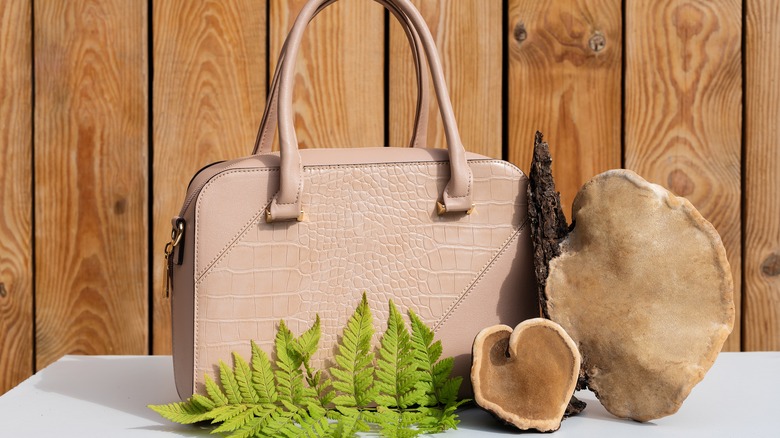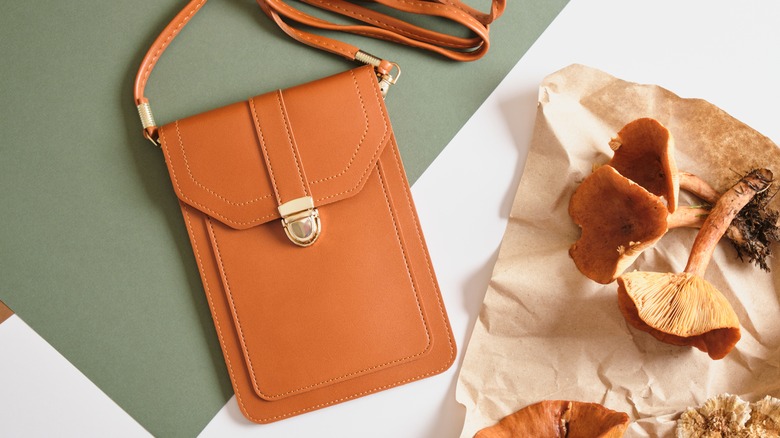Vegan Leather: What Exactly Is The Eco-Friendly Alternative?
One of the hottest topics of the 21st century is no doubt how our actions impact the environment. Global warming is on the rise, and we're all encouraged to make better choices to preserve a better world for future generations to come. These choices range from the food we consume to the clothes we wear and so much more. Luckily, today's market has a wide variety of options in every aspect imaginable so we can make environmentally conscious decisions. Sustainability has become a buzzword, with good reason, no doubt.
One key aspect of a sustainable lifestyle is which animal products we should use and consume on a daily basis. Leather products have always been popular and are known for their longevity, opulence, and timeless style. But, with the rise of eco-conscious living, vegan leather has become the preferred choice over real leather. But is vegan leather really what's best for the planet?
Can leather be vegan?
Vegan leather sounds almost like an oxymoron. So what is it? How can leather be vegan? Vegan leather, referred to as faux or synthetic leather, is made to mimic real leather. Agricultural waste and other biomaterials, typically recyclable ones, like polyurethane, cork, and even cactus, are some of the materials typically used to make faux leather. The bottom line is faux leather production causes no harm to animals, unlike the real deal.
Real leather, of course, does come with a long list of unique qualities. For example, real leather is much more durable. In fact, if you can get your hands on high-quality leather, it can last for decades. This is a big part of why a lot of people prefer real leather despite the animal cruelty. Also, real leather of decent quality tends to have a certain aesthetic quality to it that can be hard to recreate.
The pros
The number one selling point for vegan leather is, of course, the fact that it is vegan. If animal cruelty is a cause close to your heart, chances are you already own a few faux leather pieces. In addition, unlike real leather, vegan leather doesn't have to go through a tanning process. Typically, leather is chrome tanned with a chemical known as sodium dichromate, a carcinogenic that is not great for the environment. Skipping this step is most certainly a plus. Another commonly known fact is how expensive real leather can be. Vegan leather offers quite the same aesthetic for a fraction of the price, so it's easier on your wallet.
Last but not least, vegan leather doesn't have to be maintained like actual leather. Real leather comes with the upkeep essential to keeping it looking its best. Vegan leather is also much more hassle-free to clean. However, it's likely that your vegan leather products will also come with cleaning instructions that, if followed, will give you the most value for money.
The cons
As with everything, vegan leather does come with a downside. First, it does not offer the same quality as genuine leather. Leather is popular for its durability and high-quality nature, which vegan leather rarely can mimic, even if it's vegan leather of the best quality. Vegan leather is also much thinner and susceptible to damage.
In addition, the manufacturing process of vegan leather has the terrible but unavoidable side effect of releasing carcinogens into the environment. Also, vegan leather made with plastic containing raw materials is not biodegradable. There are vegan leathers out there made of plant-based raw materials that are biodegradable, but these also often come with a plastic coating that makes them more durable. Vegan leather made of biodegradable materials will not last very long and aren't as reliable. Lastly, many people invest in real leather, like the unique smell of genuine leather. This is something vegan leather cannot offer.
The environmental factor
So, is vegan leather really more sustainable than real leather? Is it better for the environment? This really depends on the manufacturing process and raw materials of the vegan leather in question. When you make a purchase, it's best to do some research into the vegan leather you're purchasing. Although the term "vegan" might automatically make us feel like we're making an ethical choice, this isn't always the case.
While there are many variations of vegan leather out there, the ones made of plastic are certainly not environmentally friendly. Plastic is known to take many, many years to decompose and is not biodegradable. However, this does not mean real leather is any better. The leather industry is responsible for many lost animal lives. Real leather also undergoes the aforementioned tanning process, which is harmful to the environment and factory workers. Keep in mind, however, that there is no perfect solution out there, and both come with pros and cons. The choice you make is largely personal and depends on what you are willing to compromise on in terms of sustainability.
Biodegradable vegan leathers
Today's market is highly innovative and presents us with an endless number of choices in almost any aspect. There are several types of vegan leather that you should keep an eye out for. One of the more popular types of vegan leather is cork leather. Cork leather is composed primarily of the bark of cork trees. Cork trees that are more than 25 years old can be stripped of their bark, posing no threat to the tree itself, so this type of vegan leather is certainly environmentally-friendly in this aspect. In fact, cork trees that are stripped of their bark and grow new bark absorb carbon dioxide, so the impact is carbon positive. Not to mention, cork is biodegradable, so the material leaves minimal impact on the environment.
There are also types, such as pineapple leather which is made of pineapple leaf fibers. Mushroom leather is another option and is sometimes also known as mycelium leather and is very similar to real leather.
Plastic leathers
Vegan leathers made of plastic, such as PVC and PU leather, are also commonly found in today's market. PVC (polyvinyl chloride) leather is typically made of two separate synthetic raw materials bound with plasticizers and coated with PVC. PVC leather is known mostly for its low price and isn't always referred to as vegan leather despite not being an animal product.
PU leather, standing for polyurethane leather, is made of two components. It includes a backing layer usually made of cotton, polyester, or sometimes even shredded leather, and a flexible polymer material. PU leather is a popular alternative to genuine leather because it's very good at mimicking the texture and feel of leather. It can even wrinkle and is unlikely to crack or peel because it does not contain plasticizers.
Needless to say, plastic leathers are certainly not an eco-friendly alternative, so if you're a conscious shopper, keep your eye out for the small print.
Making the most eco-friendly choice
Of course, when presented with so many options, deciding which might be the right one can be confusing. While vegan leather is the more ethical and sustainable option in many ways, the most sustainable choice is always the one that is already in your closet. Shopping less is a big part of eco-friendly living and is a practice worth getting used to.
In addition to that, be mindful of what products you're buying. Make sure you do enough research into what the process behind your product is. Don't be afraid to ask questions and discover who made it, where it came from, and more. These questions can help you make the most environmentally friendly buys. You can also opt for second-hand purchases. Thrifting is a great way to make your lifestyle a more eco-friendly one. It reduces your carbon footprint, and buying things that would otherwise end up in landfills.







